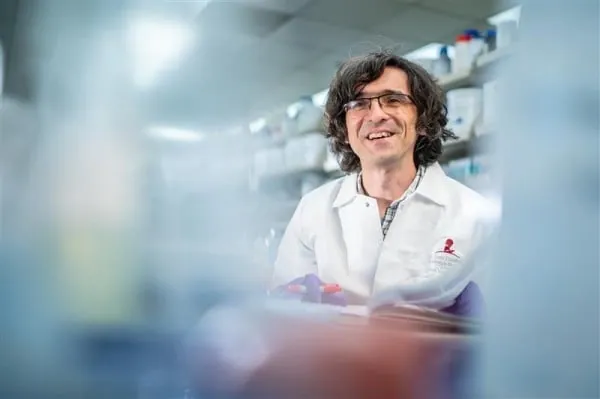
Revolutionary Insights into Chromatin Remodeling Unveiled by Groundbreaking Study!
2025-04-04
Author: Daniel
Introduction
In an exciting development in the realm of genetics, researchers at St. Jude Children's Research Hospital have made significant strides in understanding chromatin remodeling—a process pivotal for gene regulation and cellular function. Disturbances in chromatin remodeling can have severe consequences, including a potential link to the onset of cancer and various genetic disorders.
Key Techniques and Discoveries
Utilizing advanced cryo-electron microscopy (cryo-EM), the research team captured the intricate movements of the chromatin remodeling enzyme SNF2H, providing a vivid picture of its action. This comprehensive study, published in *Cell Research*, reveals 13 detailed structures that illustrate how SNF2H orchestrates the sliding of nucleosomes—complexes formed by DNA wrapped around proteins known as histones. This mechanism is crucial for controlling access to genes, a process previously only partially understood.
Research Insights
Dr. Mario Halic, a lead researcher in the Department of Structural Biology at St. Jude, expressed his enthusiasm about the findings: “While prior research has focused on capturing static snapshots of these enzymes, our team successfully visualized SNF2H in motion, demonstrating its dynamic role in repositioning DNA on nucleosomes.”
Importance of SNF2H
The enzyme SNF2H is essential for the proper remodeling of nucleosomes; its disruption can lead to significant developmental disorders. Like other chromatin remodelers, SNF2H harnesses energy derived from ATP hydrolysis to facilitate nucleosome sliding—a critical function in gene accessibility.
Detailed Analysis of Nucleosome Interaction
By analyzing SNF2H's interactions with nucleosomes in the presence of ATP, Halic and his team were able to delineate the process in multiple stages, classifying the 13 distinct structures into five groups to illustrate the phases of nucleosome movement. This innovative approach allowed researchers to glean insights into the enzyme’s mechanics, offering a holistic view of how nucleosome sliding occurs and its implications for gene expression.
Future Implications
“To fully comprehend how our genes are accessed and utilized, we must dissect the mechanics of these remodelers,” stated co-first author Dr. Deepshikha Malik. “Nucleosomes encapsulate our genetic information, and understanding how remodelers work can lead to advancements in genetic research, potentially paving the way for new treatments for various diseases.”
Conclusion
This pioneering work not only advances our understanding of chromatin dynamics but also opens new avenues for exploring the molecular underpinnings of genetic regulation and its effect on health. The study was conducted by a dedicated team at St. Jude, including co-first author Dr. Ashish Deshmukh and researcher Silvija Bilokapic, and was made possible through funding from the National Institutes of Health and the American Lebanese Syrian Associated Charities (ALSAC).
Stay tuned for more revelations that could transform our understanding of genomics in the coming years!

 Brasil (PT)
Brasil (PT)
 Canada (EN)
Canada (EN)
 Chile (ES)
Chile (ES)
 Česko (CS)
Česko (CS)
 대한민국 (KO)
대한민국 (KO)
 España (ES)
España (ES)
 France (FR)
France (FR)
 Hong Kong (EN)
Hong Kong (EN)
 Italia (IT)
Italia (IT)
 日本 (JA)
日本 (JA)
 Magyarország (HU)
Magyarország (HU)
 Norge (NO)
Norge (NO)
 Polska (PL)
Polska (PL)
 Schweiz (DE)
Schweiz (DE)
 Singapore (EN)
Singapore (EN)
 Sverige (SV)
Sverige (SV)
 Suomi (FI)
Suomi (FI)
 Türkiye (TR)
Türkiye (TR)
 الإمارات العربية المتحدة (AR)
الإمارات العربية المتحدة (AR)